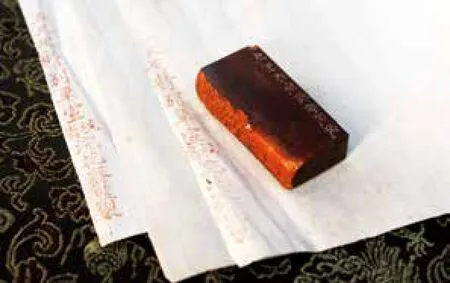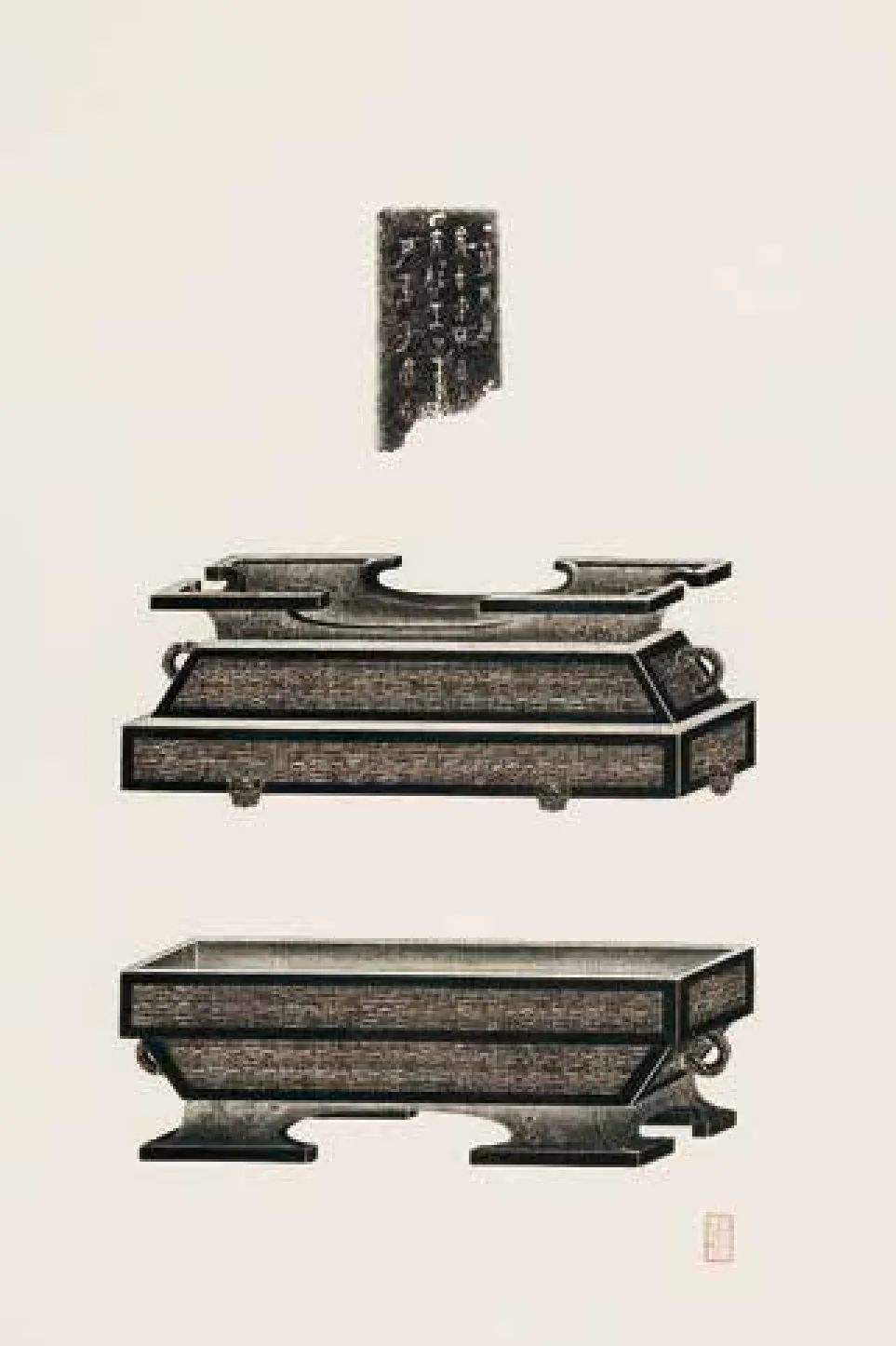Huanhuazhai: Paper of Romance, Art
2016-03-18ByZhangJie
By Zhang Jie
Huanhuazhai: Paper of Romance, Art
By Zhang Jie

浣花斋宣纸皆有监制印章The rice paper made under the supervision of Huanhuazhai is all marked by a seal in a corner.
Situated at the corner of West Lake Avenue and Yan’an Road in downtown Hangzhou, Huanhuazhai is a time-honored art stationery shop that sells rice paper and mounts paintings. Founded in 1637, the shop once ranked with three other shops in Beijing, Nanjing and Shanghai as the country’s top four art businesses during the last years of the Qing Dynasty (1644-1911).
Huanhua in the shop’s name goes back to Xue Tao, a poetess of the Tang (618-907) in Chengdu. As the legend goes, Xue Tao met Yuan Zhen in March 809 AD in Chengdu. Yuan Zhen was an established poet and a government official who was visiting Chengdu on a government mission. The 31-year-olde Yuan had learned about Xue Tao for her poems and youthful beauty and made an appointment to meet the young woman. They met. In the following four months they met many times. In July,Yuan Zhen finished his mission in Chengdu and was transferred to another position far away.
Xue Tao missed Yuan Zhen. Soon Yuan’s letter came. She wrote poems and sent them to Yuan. She disliked the correspondence paper made in Chengdu and decided to improve. She remodeled the paper to a smaller size, just large enough to write down a poem of 56 characters in eight lines, and made the paper pinkish. The pinkish paper looks as if it were washed first in water colored by peach flowers. That’s how the correspondence paper has been known as Huanhua Paper, Huanhua in Chinese referring to washing flower petals in water. The correspondence paper in this size and in this color is also known as Xue Tao paper.
In the following dynasties, the correspondence paper originally designed by Xue Tao saw more improvement and enjoyed national popularity. In the Ming Dynasty, Huanhuazhai in Hangzhou made and sold various kinds of art paper. Naturally, Huanhua paper was its best seller. The business also engaged in publishing books occasionally, mounting paintings, selling artworks of painting and calligraphy consigned by artists, restoring damaged books and paintings.

浣花斋古画(籍)修缮及墨拓技艺第十一代传承人赵军(右二)讲解全形拓技艺。Zhao Jun, a master of Huanhuazhai, talks about the restoration and copying techniques of Huanhuazhai.
There are books published in the Qing Dynasty that testify to Huanhuazhai’s engagement in publishing books. In the collection of China National Library are two collections of poems by woman poets published by Huanhuazhai in 1669. In the library of Beijing University is a ten-volume book compiled by Chen Yinglin for classic studies. It is a Huanhuazhai version. In the library of China Academy of Sciences is a Huanhuazhai version of a poem collection by Hu Qiaoshuan published during the 1796 to 1820 reign of Emperor Jiaqing of the Qing.

浣花斋战国庄王之子簠全形拓This is a rubber copy of a utensil that dates back to the Warring States, made by Huanhuazhai.
Huanhuazhai was famed for the Huanhua paper, traditionally known as rice paper or Xuan paper for painting and calligraphy, produced under its supervision. The best seller was the traditional size of five Chinese feet (153-84cm). In the last decades of the 19th century and the early decades of the 20th century, Huanhuazhai was popular with artists of national renown such as Pu Hua, Wu Changshuo, Huang Binhong, Li Shutong, Yu Shaosong, Shen Yimo, Pan Tianshou, Zhang Daqian and Chen Shaomei. The popularity was national and regional partly because this part of the country produced the largest number of artists and attracted artists from other parts of the country. Many art masterpieces of this period were painted on the Xuan paper made under the supervision of Huanhuazhai.
The success of Huanhuazhai during this period of time can be attributed to Ding Jichang. After inheriting the business from his mater Zhao Baosheng, Ding developed an elaborate process to restore damaged books, improved paper production, launched innovative product lines of correspondence paper, and established itself as a top business in rubbing and mounting paintings. That’s how the shop developed a national renown.
Nowadays, Huanhuazhai is on the municipal and provincial lists of time-honored businesses. In 2011, its ancient painting and book restoration process and ink rubbing technique were inscribed on the list of intangible cultural heritage of Hangzhou.
In October 2015, Huanhuazhai founded a center for preserving the rubbing technique used to save inscriptions on stones and metals. At present, the center has over 80 members from five countries and regions.
